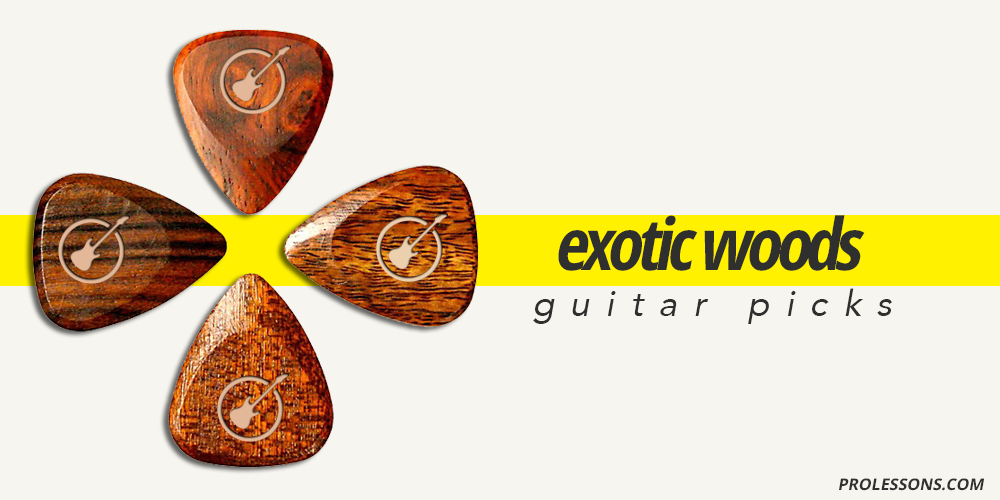FREE LESSON
PHIL KEAGGY - Grammy nominated and seven-time Dove Award winner, is one of the world’s great guitar players and a pioneer in contemporary Christian music.

When you think about the different pieces of equipment that go into playing a guitar, you might think about amps, straps, cases, or other accessories. Guitar Picks are the smallest of these and also one of the most important.
Guitar picks are not going to break your budget, but they will have a profound influence on your playing abilities. Sure, the best guitarists out there will sound good no matter what they’re using to attack the strings; however, for everyday guitarists (especially beginners) knowing what kinds of picks are available is a key piece of information to have.
Guitar picks, or “plectra” as they have sometimes been called, can be made out of just about anything. Over the years, different companies and individuals have tried to find the perfect material to make a pick.
For the longest time, a piece of tortoise shell was considered to be an elite guitar pick. These can still be found in some places if you’re looking hard enough, but they have been banned for a few decades. The durability and flexibility of the shell have been an inspiration for pick creators trying to find a suitable replacement.
While most guitar players will gravitate toward a plastic guitar pick, there is a section of the community that prefers to use nylon picks. The main feature with these is that their flexibility is out of this world and they tend to sound a little brighter than a thicker plastic would. Similarly to celluloid picks, they sometimes break easily.
Notable rockers like Gene Simmons and Jimmy Page are on board with nylon picks and it’s hard to argue with those guys.
This is a bit of a broad designation as plastic guitar picks have their own subsets within this category. With many companies pursuing a gold standard in plastic, there have been a few different materials to pop up along the way.
Celluloid is arguably the most common among plastic picks as many mainstream guitarists enjoy the crisp sound they produce as well as the their smooth playing. The downside is that sometimes the celluloid picks snap pretty easily, especially for guys playing a little harder.
In the pursuit of copying the great sound of those tortoise shell picks we talked about earlier, Tortex is considered to be the closest match. These picks have a powdery feel to them which enables the player to obtain a much better grip than some of the other picks out there. On top of the grip, you get the same well-rounded tone that their predecessors offered. Plus, you don’t have to feel guilty about any animal cruelty going into your guitar accessories.
Some famous backers of the Tortex picks are Kurt Cobain from Nirvana and James Hetfield of Metallica.
Ultex picks from Dunlop are another popular choice for guitarists everywhere. They provide a really good sound while also being “virtually indestructible.” These lightweight picks, as well as Ultem can be really great for acoustic guitars.
Lastly, Delrin (or Acetal) picks are another option if you are looking for something with stability and strength. There are some reports that they don’t produce the best string vibration, though.

People use all kinds of things to pluck the strings of their favorite instruments. You can find guitar picks made out of ivory, kevlar, metal, and felt. Wooden guitar picks have been said to provide a nice, earthy tone. They can be really nice with acoustic guitars.
There are also stone guitar picks out there for you to try. You can find them in materials like jade and agate. These picks don’t absorb as much of the harmonics from your strings as plastics may, but hey, that might be the alternative sound you’re looking for.
Just like with discovering the different materials that guitar picks are made of, there are a variety of thicknesses available. In layman’s terms, the thicker a guitar pick is, the deeper and thicker the sound will be.
To understand what is considered thick or thin, look at the measured thickness in millimeters that should be listed on the pick. A light/thin or extra light/thin guitar pick will be below .7mm. Medium thickness is somewhere between .7mm and .84mm. Most guitar players will be somewhere in this ballpark.
After that, you’ll have heavy or thick from .85 to 1.2mm. Finally, extra thick or extra heavy will be somewhere north of those numbers. You may find a couple of companies out there that have their own guidelines for thickness, but these numbers are a good generalization.
When it comes to shapes of plectra throughout history, there are some really strange ones out there. Today, just about everyone uses a pick that is some sort of teardrop shape.
Where things really change is at the end where you’ll be striking the strings with. If you’re more of a strummer, you’ll be fine with a pick that has a nice rounded edge. On the other hand, if you’re playing some kind of jazz or rock guitar that requires more precision, you’ll want to find a pick that is really sharp on that playing end. This will give you the speed necessary to play what you want to play.
As far as textures go, there’s also not a whole lot of variation. Many guitar picks, like celluloid and other plastics, will be smooth to the touch. However, there are some nylon and other materials that will occasionally come with bumps and grooves on the gripping end. This elevated portion allows you to grip the pick a little tighter in situations where some of those other guitar picks would just fly out of your hand. Naturally, this isn’t a feature for everyone, but it could certainly come in handy for guitarists playing difficult material under bright lights.
That does it for our review of the different kinds of guitar picks available today. We hope the guys at Pro Lessons can be a helpful resource for you in all of your musical endeavors. If you would like to learn more about the affordable online guitar lessons that we provide, click on the link below. Our professional instructors are eager to help you learn to play guitar like never before.